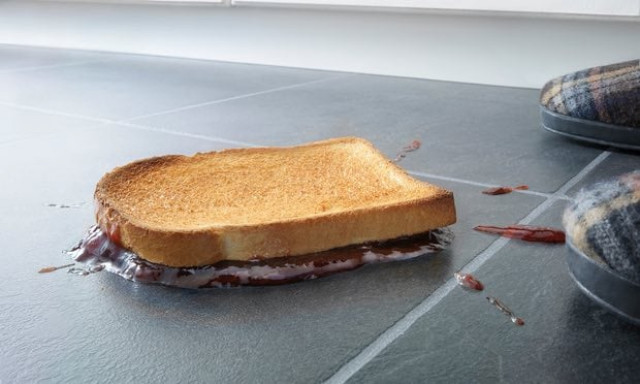Food and the five-second rule: The final verdict
And will they ever tire of trying to prove the theory?

PHOTO:GUARDIAN
Of course, there are some who don’t pander to this and others who simply are happy to take their chances. But of late, scientists have been trying to figure out where this five-second rule comes from and more importantly, is it even true?
Anthony Hilton, a professor of applied microbiology at Aston University, has found that when it comes to the five-second rule, there may be variance between classes of objects, reported The Guardian. This implies that the likes of sandwiches, crisps, dry toast and biscuits can all be given a full half-hour on the floor, with no harm done. But sweets, cooked pasta and doughnuts still adhere to the five-second marker. Anthony has also found that tiled surfaces are dirtier than carpets.
However, as astonishing as these findings may be, what is more amazing is that looking into the five-second rule has become something of a cottage industry in modern times. Back in 2003, Jillian Clarke of the University of Illinois established the power of the five-second rule to excite media attention when she showed that rough tiles would lead to the transfer of more bacteria to gummy bears dropped for five seconds than smooth ones.
Tightening the noose: Food watchdog approves new safety regulations
Then, in 2006, Rutgers University concluded that the rule was a “significant oversimplification. This was followed by Paul Dawson of Clemson University who, in 2007, concluded in the Journal of Applied Microbiology that the dirtiness of the floor is much more important than how long the food lies there. Paul also agreed that carpet beat tiles massively – with 1% contamination to 70%. In 2014, Aston University announced that while contamination was generally instant, the load increased exponentially in the period from three to 30 seconds after landing.
But the biggest story never told about the five-second rule is that it doesn’t matter either way. While cross-contamination remains a leading cause of food poisoning – the use of unwashed knives that have cut raw chicken or vegetables, for instance – good food landing on a good-enough floor has seldom harmed anyone.
Anthony’s study covered typical floor types in bacteria, but found that dropped food picked up no more than 0.0004% of it. Is the five-second rule even real, then?
Have something to add to the story? Share it in the comments below.



















COMMENTS
Comments are moderated and generally will be posted if they are on-topic and not abusive.
For more information, please see our Comments FAQ